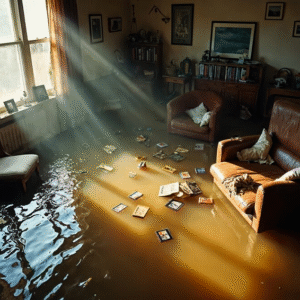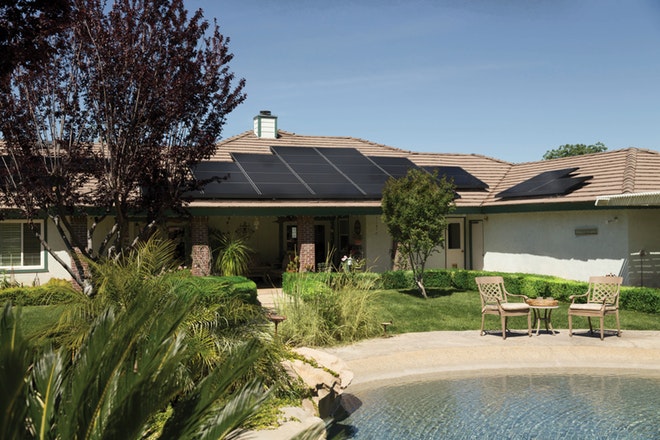People who live in their own houses have to face certain difficulties in winter when it comes to roof maintenance. Winter depressions such as heavy snow and low temperatures freeze and weaken your roof thus causing costly repairs and sometime deterioration of your structure. However, it is possible to do things in order to prevent damage of your roof or to make sure that it will only let you through the season. Choosing the right roofing contractor will help you to prevent roof damage during colder months.
This blog will explore some necessary winter roof maintenance tips to protect your roof from the elements while maintaining it at its right working condition.
Why Winter Roof Maintenance is Crucial for Your Home
Winter roof maintenance can preserve your home from the extreme effects brought about by snow, ice, and freezing temperatures. So, a poorly maintained roof would be prone to leaks, ice dams, and structural damage, which may lead to costly repair efforts or even compromise one’s home safety.
A well-maintained roof keeps your house safe and insulates it and becomes energy-efficient without allowing moisture to get inside to start growing molds or rotting. It is in the maintenance of your roof that major problems are avoided from developing during winter and ensure that it will remain robust and intact throughout the year.
Effective Tips for Winter Roof Maintenance
1. Inspect Your Roof Before Winter Sets In
It is important to make sure your roof is scrutinized well before the first snowflake falls. Check out any damage, wear, or aging that could exacerbate during winter.
- Shingles can be blown away or damaged by the wind and heavy snowfall, and this gives the way to leaks through your roof.
- Damaged or broken tiles: Seepage through the cracks of the roofing tiles can allow water and ice, which can result in possible leakage or mold.
- Damaged flashing: Vertical sealing elements; the mentioned type of material degradation can cause leaking in zones where flashing is used around chimneys, vents, and skylight.
- Sagging areas: If you notice in some parts of your roof that it appears to be low or has sunk a bit, this might be a sign of water damage or structural problem.
That is why it is important to recognize these issues as before the onset of the winter it will be very difficult to prevent them.
2. Clear Debris from Your Roof and Gutters
Fallen leaves, twigs, and other debris on your roof and gutters make a good blockage. Accumulated snow and ice throughout the winter clog up the gutters, then force water back up onto your roof-a good source of leaks, or worse, to ice dams and damage your fascia and soffits.
- Clean gutters: It should be noted to clear your gutters more often and make sure that they are working properly. Leaves and debris accumulation cause pool and seepage of water on your roof.
- Get debris off the roof: Such contents as leaves, branches or moss might make the surface to retain moisture and when this happens the chances of developing mold or rot becomes very high. Clean your roof from clutter at least twice a week or at least once a day if possible.
Clear roofs and gutters will help avoid accumulation of water leading to ice roof dams. This commonly occurs during winter season.
3. Trim Overhanging Branches
Overhanging branches during winter storms can become a threat to your roof. Snowfall or ice building up can cause the branch to snap, and then there’s potential damage to your roof. It’s good practice to cut the branches that are over your roof.
Make sure the branches are not touching the roof, which may cause scaffolding and wearing with time. Trimming of branches ensures that damage is minimized due to sudden fall of debris and promotes airflow which will minimize moss and algae accumulation on the roof.
4. Check Attic Ventilation and Insulation
Proper attic ventilation and insulation will keep your roof intact during winter. If the attic is not well-insulated, then heat inside the house might find its way out through the roof, which would cause uneven melting of snow atop your roof. It could lead to ice dams, an effect of water refreezing at the edges of your roof. It leads to water backing up under shingles and creates leaks.
- Insulate your attic: Proper insulation will keep the attic at a constant temperature, thus preventing meltdown and refreezing at eaves.
- This guarantees that your attic has sufficient ventilation allowing for good airflow, keeping your roof cool, and preventing ice dams from forming.
Improve the attic’s insulation and roof ventilation in order to prevent ice dams while maintaining a structurally sound roof during cold months.
5. Install Roof Ice Guards
If you reside in a region where snow or ice forms extensively, consider installing roof ice guards or heat cables on the eaves of your roof. These products do not allow ice to build up and form into ice dams. Ice guards promote the melting snow’s easy flow into gutters, which hardly results in water damage.
Roof ice guards are particularly useful for homeowners who have a low-pitched roof or those homes that stay in areas where heavy snowfalls are common. These guards will save you from expensive roof repair and water damage.
6. Check for Signs of Roof Leaks
One of the most frequent problems in winter is roof leakage. Since snow falls, melts, and collects, it enters even the smallest cracks or gaps on your roof. Such leaks can lead to massive damage inside your home, resulting in mold development, ceilings, and even ruined insulation.
Look for signs of leaks inside your home.
- Stains on the ceiling: If you see brown or yellow spots on your ceiling then be sure that your roof is leaking.
- Water spots on the walls: This you can identify by checking for stains or water marks on the wall or even peeling paint that also is evidence of leakages.
- Visible mold or mildew: Fungal growth can be an indicator of a moisture issue.
As much as you notice any of the above warning signs, do not wait to call professional roofers to work on that particular problem that may lead to huge losses. You can save thousands of dollars in the future from repair if you detect an issue at an early stage.
7. Professional Roof Inspection and Maintenance
While simple repairing jobs and inspections of the roof can theoretically be done personally, it is always recommended that a professional roofing contractor performs an extensive inspection of the roof. Experts will even diagnose other issues that you cannot see, and so you get professional repair to make sure your roof is suitable for winter.
A professional roofer can also help the homeowner with day-to-day maintenance tasks such as reapplication of sealants around chimneys and vents that keep out leaks and further enhance the efficiency of the roof.
8. Ensure Proper Drainage
Always see that it drains well to make water do not pool on top during winter. If not proper to drain, it forms dams of ice or opens routes into your house through roofing leading to roof leaks, ensuring that downspouts remain cleared so that water flows away from your home base.
Additionally, look for any valleys in your roof where water flows as this area is more prone to collection. If you see drainage problems, have them repaired before the winter weather starts to hit.
9. Prepare for Snow Removal
Heavy snowfall will strain your roof heavily if left to pile up over time. Excessive snow will make your roof collapse, especially on older roofs or those weakened by previous damage. Prevent this by being proactive in removing snow from your roof during the winter months.
For a flat roof, you should make use of a roof rake to clear off snow accumulation. When the roof slopes, you better leave that to professionals as climbing up there when icy might be very risky. Removing snow from roofs protects against unwanted weight and risk of structural damage.
10. Perform Regular Maintenance Throughout Winter
Winter roof care does not end once the first snowfall hits. Instead, it is through regular maintenance that your roof will be protected throughout the season. Look for new problems such as damaged shingles, debris accumulation, and signs of ice dams when inspecting your roof from time to time. In your attic, check for leaks, condensation, or drafts that may suggest insulation or ventilation problems.
Removing unwanted snow and ice from your roof eliminates extra burden and might cause damage to the structure. Routine checks keep you on top of small issues before they grow into costly repairs, so your roof’s integrity is well maintained during the rigorous winter seasons.
How to Extend the Lifespan of Your Roof During Winter Months
The first way of extending your roof’s life during winter is proactive maintenance and regular care. In this respect, start by removing from your roof debris that usually traps moisture, causes molding, and decays. Maintain clean gutters since improper gutters can form ice dams that damage the roof’s shingles, as well as cause leaks in general.
Proper attic insulation and ventilation will regulate temperature in and around the house to ensure snow does not melt and freeze unevenly on roof edges. Trimming of the overhanging branches from the trees protects the roof by removing falling debris when a storm is raging through; scheduled inspections help determine smaller problems before they get more complex. These preventive measures don’t just protect your roof during winter but also make it long-lasting, saving you big repair bills in the long run.
Why Professional Roof Inspections Are Worth the Investment
It really offers a level of professional expertise and insight that individual home owners may not be able to achieve. A well-trained roofer can notice signs as faint as a hairline crack on some part, weakness in shingles, improper sealing, and more, all of which can easily evade a casual eye. Catching these early would prevent issues at small levels from becoming problematic conditions or costly problems like leaks and damage to the structural framework of the house.
Additional checks are done on critical flashing, vents, and gutters to ensure that every part of your roofing is working well. Investing in a professional inspection not only saves peace of mind but also keeps your roof longer and more secure by protecting the total worth of your home throughout.
Conclusion
Winter roof maintenance is important to ensure your roof survives the cold without damage. Following these tips and addressing issues before the first snowstorm will help avoid costly repairs and keep the integrity of your roof in good condition. Here are a few steps that can protect the house from harsh winter weather: Inspection, insulation and cleaning of the gutters. If you have doubts about the current state of your roof, or need help preparing for an Austin winter, just give your roof a once over before contacting your local roofing contractor.






